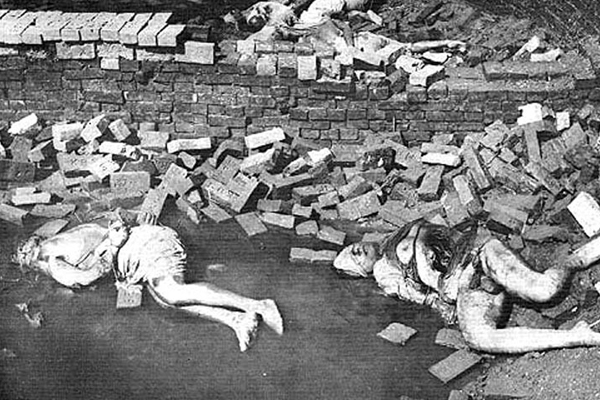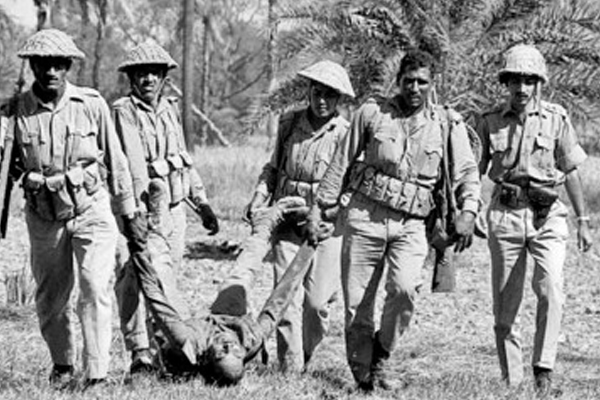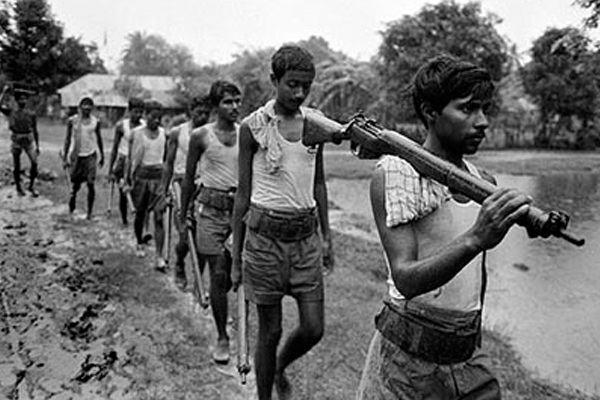When it comes to Rashid Minhas, we are taught to feel a certain way. From childhood, we are conditioned to get all choked up at the mention of the Air Force pilot who sacrificed his life.
He was a hero, they tell us.
But was he?
Before I joined a better school while growing up in the Middle East, for a couple of years, I was a student at an International Pakistani school where the curriculum and teachers were imported straight from Pakistan. In this school, I was taught about Minhas, same as every Pakistani child.
The Mel Gibson version of the tale was that Minhas, a young pilot in the Pakistan Air Force (PAF), was getting ready for flight in his jet trainer, when the evil dark Bengali Flight Lieutenant (nothing like a bit of racism to spice up the story from a Pakistani teacher who happened to be dark herself), Matiur Rahman, hijacked the plane, and knocked Minhas out.
When Minhas came through, he realised the evil Bengali was attempting to defect to the even eviler neighbours India, so after a struggle, Minhas deliberately crashed the plane close to the Indian border, killing Rahman, and ‘sacrificing’ himself (note the difference in language).
Minhas’s actual actions are probably close to the official story, though according to Wikipedia, Yawar A Mazhar, ‘a writer for Pakistan Military Consortium’ – after speaking to the captain who was charged with investigating the incident – learned that Minhas was flying too close to the ground to prevent the crash.
Any man who gives his life for his country, especially a soldier, is a hero on some level, but a real hero is a person whose cause is just.
The thousands of Pakistani soldiers who sacrificed their lives fighting the Taliban? Heroes.
The countless Pakistani policemen dying at the hands of militants? Heroes.
As for this tale, the real hero was the man introduced to us as the villain – Rahman.
After winning the elections fair and square, the oppressed Bengalis who had been treated as second-class citizens and denied many freedoms (just as we continue to do to minorities today), were unhappy that their Awami League wasn’t given the power it had secured. Instead, the Pakistani government at the time began a horrific bloodthirsty crackdown on the Bengali resistance.
It was called Operation Searchlight.
1. Genocide
According to BBC, the Pakistan Army’s ‘brutal campaign’ left 300,000 to 500,000 Bengali people murdered. The Pakistani writer who exposed the atrocity, an honest reporter named Anthony Mascarenhas, was forced to go into hiding.
“I have witnessed the brutality of ‘kill and burn missions’ as the army units, after clearing out the rebels, pursued the pogrom in the towns and villages. I have seen whole villages devastated by ‘punitive action’. And in the officer’s mess at night, I have listened incredulously as otherwise brave and honourable men proudly chewed over the day’s kill. ‘How many did you get?’ The answers are seared in my memory.”

Photo: Tanvir Mokammel
2. Genocidal rapes
It is estimated by Dr Geoffrey Davis that militias raped between 200 – 400,000 Bangladeshi women (mostly Muslim, but some Hindu as well) for no other reason than to spread terror and break down the resistance psychologically.
As per Anushay Hussain,
“Each time I go home to Bangladesh, a relative, usually male, takes me aside and whispers stories to me about the ‘piles, and piles of bodies of rape victims’ you would find under bridges in mass graves.”
“How many women were raped and killed in the hands of Pakistani soldiers,” my uncle tells me as his voice whimpers.
“You cannot imagine, Ma.”
According to Dr Davis,
“Probably the numbers are very conservative compared with what they did. The descriptions of how they captured towns were very interesting. They’d keep the infantry back and put artillery ahead and they would shell the hospitals and schools and that caused absolute chaos in the town. Then the infantry would go in and begin to segregate the women. Apart from little children, all those were sexually matured would be segregated. Then the women would be put in the compound under guard and made available to the troops.
Some of the stories they told were appalling. Being raped again and again and again. A lot of them died in those [rape] camps. There was an air of disbelief about the whole thing. Nobody could credit that it really happened! But the evidence clearly showed that it did happen.”
Some of these girls were said to be as young as 13. If you doubt the validity of this information, then give it a quick internet search. The countless tales will cry out at you from the computer screen in unison like an orchestra of horror.

Photo: The Conservative Papers
3. Murder of intellectuals
Historians suggest that the average American slave owner would kill his smarter slaves and keep the large, strong ones who were easier to control.

Photo: The Bangladesh Chronicle
I suppose this was why so many of the learned Bangladeshis were slaughtered at the beginning of Operation Searchlight. Banglapedia shares the following statistics of those killed:
- Academics: 991
- Journalist: 13
- Physician: 49
- Lawyer: 42
- Others (littérateur, artist and engineer): 16
The Bangladesh Liberation War was perhaps one of the darkest periods in Pakistan’s history. I suppose this is why it took till 2002 for an official apology, when President Pervez Musharraf officially expressed regret during a visit to Bangladesh.

Photo: Liberation War Museum
In August 1972, at the height of the atrocities, I am sure Rahman was incensed by the events in East Pakistan and felt compelled to join the resistance. In this story, he was the hero and we were the oppressors. He was the Luke Skywalker of this tale, while Minhas was the brave and loyal Stormtrooper who got in his way. So excuse me while I don’t shed any tears for Minhas. I do, however, have some to shed for Bangladesh.
from The Express Tribune Blog http://blogs.tribune.com.pk/story/29123/excuse-me-while-i-dont-shed-tears-for-rashid-minhas/
No comments:
Post a Comment